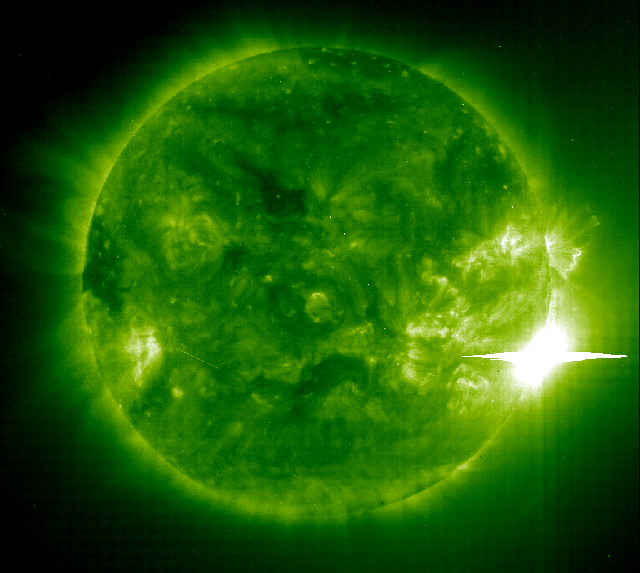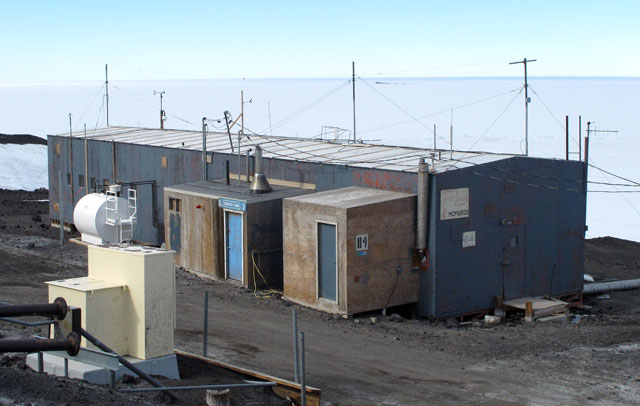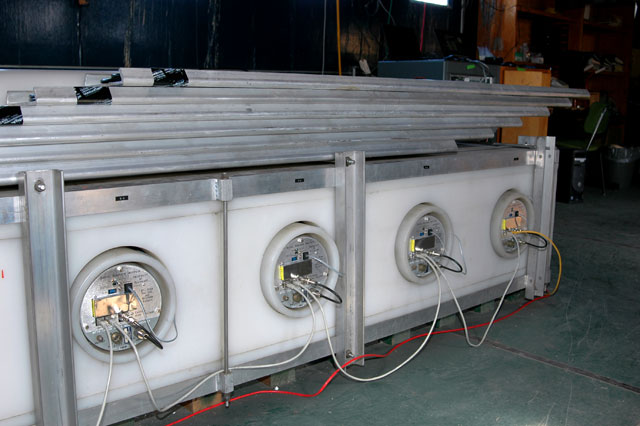50 years and countingCosmic Ray Observatory longest running experiment in McMurdoPosted June 10, 2011
The U.S. Antarctic Program’s The McMurdo Station “What we’re really doing is measuring the intensity of the cosmic rays hitting the atmosphere, more or less directly above the instrument,” explained Paul Evenson The Bartol Research Institute, under well-known physicist Martin A. Pomerantz, installed the CosRay experiment at McMurdo Station. He had overseen the installation of a similar observatory three years earlier at Thule, Greenland. In 1960, en route to McMurdo to visit the instrument for the first time, Pomerantz learned that both observatories had recorded a major solar flare event from the sun. It was the first time a solar cosmic ray event had been observed at both ends of the Earth. “The subsequent story is just wonderful. A lot of things happened because we had that station,” Pomerantz later said during an interview in May 2000 as part of the Polar Oral History Project However, the CosRay experiment lives on, even though the questions posed by today’s researchers have evolved. “We’re finding new ways to use the data. We’re finding new instruments to use the data with,” Evenson said. Counting on a predictionSo what exactly are cosmic rays and why are scientists interested in them? First, cosmic ray is a bit of a misnomer — a holdover term from the early 20th century. Cosmic rays are energetically charged subatomic particles, originating from processes on the sun or from even more mysterious phenomena, such as a supernova explosion. These cosmic rays speed toward the Earth at nearly the speed of light. The particles that hit the Earth, called primary cosmic rays, are destroyed when they hit the atmosphere, producing a cascade of secondary subatomic particles, including the neutrons that are detected by the CosRay Observatory. The McMurdo observatory is one of a dozen that make up an international neutron monitoring network By counting the number of neutrons that arrive at these detectors, researchers can calculate how many cosmic rays arrived at a corresponding location in the Earth’s upper atmosphere. “The main thing we’re observing is the magnetic field that comes out of the sun,” Evenson explained. “Fluctuations in the magnetic field coming out of the sun translate into the intensity of the particles we see.” Today’s global network of neutron monitors allows the researchers to see the various asymmetries in the sun’s magnetic field. “By looking in different directions, you get a much more complete picture of the magnetic fluctuations,” he said. Monitoring solar activity and cycles helps scientists predict when magnetic disturbances from the sun might occur. Energetic bursts from the sun can help cause “storms” in Earth’s magnetic field that can disrupt satellites. A major magnetic storm in 2003 affected 47 satellites, including one scientific satellite costing $640 million, which was written off as a total loss. “You can gain an idea, by studying the cosmic rays, about what might be coming,” Evenson said.1 2 Next |



For USAP Participants |
For The Public |
For Researchers and EducatorsContact UsU.S. National Science FoundationOffice of Polar Programs Geosciences Directorate 2415 Eisenhower Avenue, Suite W7100 Alexandria, VA 22314 Sign up for the NSF Office of Polar Programs newsletter and events. Feedback Form |




